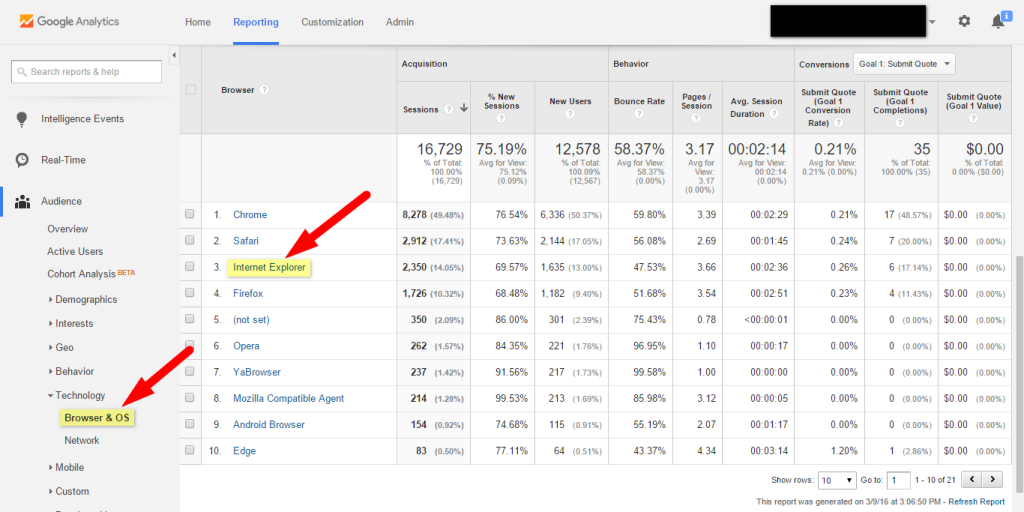The end of an era has come; a browser era that is. To the delight of long-suffering web developers everywhere, Microsoft has finally pulled the plug on older versions of Internet Explorer.
Fear not, faithful IE users! The browser itself isn’t going anywhere, but as of January 12, 2016, Microsoft no longer offers security updates or tech support for older versions of IE. This major push towards Explorer 11 (E11), currently available on Windows 10, was first announced back in August 2014. By strongly encouraging users to upgrade to E11, Microsoft is hoping to eventually wipe out all older version of Explorer. This means big changes for Windows users, and especially web development professionals.
Business Impact
What exactly does this change mean for company websites? Previously, developers had to go through the hassle of coding websites and online applications to work with multiple web browsers like IE, Chrome, Firefox, Safari, or Opera. With this update, developers will no longer have to worry about how solutions render across numerous older versions of IE. This reduces the time and headache of optimizing sites for cross-browser compatibility.
But don’t break out the champagne and confetti cannons just yet. Before cutting off your own support of older IE browsers cold-turkey, you’ll first want to properly assess and manage the impact this change will have on your website users.
Analyze Your Website Traffic
How can you tell if your site visitors are using old versions of Explorer? It can be a little tricky, especially if you aren’t sure how and where to find that kind of information. As always, Blayzer has you covered with a simple step-by-step process on how to check the stats through Google Analytics.
- Log onto https://www.google.com/analytics/ and sign in.
- Go to Audience.
- Click Technology.
- Click Browser & OS.
This breakdown tells you the percentage of your users who visit your site with each browser. From here, you can drill down deeper by clicking on the browser name to see which versions they are using. With this information, you should be able to determine how much of your audience is using outdated versions of Internet Explorer.

Inform Your Users
It’s always good to be proactive when it comes to managing your user experience and making your solutions easier to use. If a large number of your site visitors are still using old IE browsers, it would be a good idea to mention this change to your users in a newsletter, blog post, or even a note somewhere on your site. This will give them time to adapt.
However, remember that with change comes resistance. Some users may need an extra push to upgrade. Internet Explorer has been the default browser for millions of people worldwide for almost two decades. According to ZDNet, Explorer is currently the second leading browser in the United States. If moving your users away from older IE browsers and toward a newer browser that works better with your site is important to your business, then it’s worth a little extra communication effort. Reassure your users that upgrading will not only give them a better browsing experience on your website, but E11’s new security features might also give their computers a little extra built-in protection from malware and virus attacks. After all, helping to give users a safe and happy browsing experience reflects kindly on your brand.
For more information about professional website development services from Blayzer, click here.



